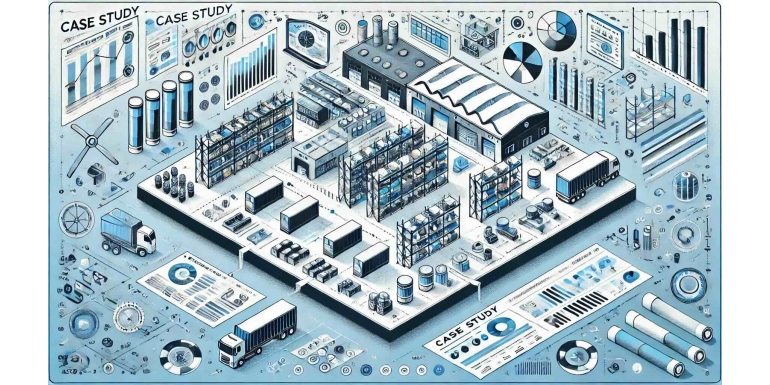
Case Study: How an ERP Can Revolutionize Inventory Management
Inventory management is a crucial element for the success of any business, whether in retail, manufacturing, or distribution. Poor inventory management can lead to financial losses, dissatisfied customers, and operational inefficiencies. Implementing an ERP (Enterprise Resource Planning) offers a powerful solution to transform inventory management into a smooth, accurate, and cost-effective process. This article explores in detail how an ERP can revolutionize inventory management through a concrete case study.
What is an ERP and How Does it Work?
An ERP is an integrated software solution that centralizes all the essential processes of a business, including inventory management, accounting, human resources, sales, and more. Regarding inventory management, an ERP allows for real-time tracking of stock levels, order management, forecasting future needs, and minimizing human errors. The ERP system provides a comprehensive overview of inventory, enabling businesses to make informed decisions based on accurate data.
Challenges Before Implementing the ERP
Before implementing the ERP, XYZ Company, specialized in distributing electronic products, faced several challenges in inventory management:
- Overstocking and Stockouts: The company struggled to maintain a balance between excessive stock and stockouts, leading to unnecessary costs and customer dissatisfaction.
- Inaccurate Data: Manual inventory tracking was prone to errors, leading to inaccuracies in stock levels and financial reports.
- Lack of Visibility: Inventory data was scattered across multiple systems and spreadsheets, making it difficult to obtain an accurate overview of operations.
Solution: ERP Implementation
To resolve these issues, XYZ Company decided to implement an ERP system with advanced inventory management features. The key features of the implemented ERP included:
- Real-Time Tracking: The ERP allowed the company to track stock levels in real-time, automate reordering, and prevent stockouts.
- Automated Order Management: The ERP system automated the ordering process, automatically placing orders with suppliers when stock levels reached a predefined threshold.
- Demand Forecasting: Using advanced algorithms, the ERP predicted future needs based on past trends, seasonal cycles, and sales data.
Results After Implementing the ERP
The ERP implementation significantly impacted XYZ Company's inventory management. The key results observed were:
- Reduced Storage Costs: By optimizing stock levels, the company reduced storage costs, avoiding both overstocking and stockouts.
- Improved Data Accuracy: Automated inventory tracking eliminated human errors, improving data accuracy and the reliability of financial reports.
- Increased Customer Satisfaction: With better inventory management, the company could respond more quickly to customer orders, reducing delivery times and increasing customer satisfaction.
- Global Visibility: The ERP provided a real-time overview of the company’s operations, enabling faster and more informed decision-making.
Key Benefits of ERP for Inventory Management
The case study of XYZ Company highlights several key benefits of ERP for inventory management:
- Process Optimization: An ERP allows for the automation and optimization of the entire inventory management process, from ordering to delivery, including warehouse management.
- Cost Reduction: By minimizing errors and optimizing stock levels, an ERP helps reduce costs related to storage, handling, and inventory management.
- Improved Accuracy: Real-time tracking and automated inventory management greatly enhance data accuracy, which is essential for effective resource management.
- Better Forecasting: With its advanced analytics capabilities, an ERP allows for more accurate forecasting of future needs, avoiding shortages or excess stock.
Conclusion
Implementing an ERP can truly revolutionize inventory management by offering an integrated, automated solution based on accurate data. As demonstrated in the case study of XYZ Company, an ERP can not only solve common inventory management problems but also provide significant benefits in terms of cost reduction, improved data accuracy, and increased customer satisfaction. For any business looking to optimize its inventory management, investing in a modern ERP tailored to its needs can prove to be a key strategic decision.
